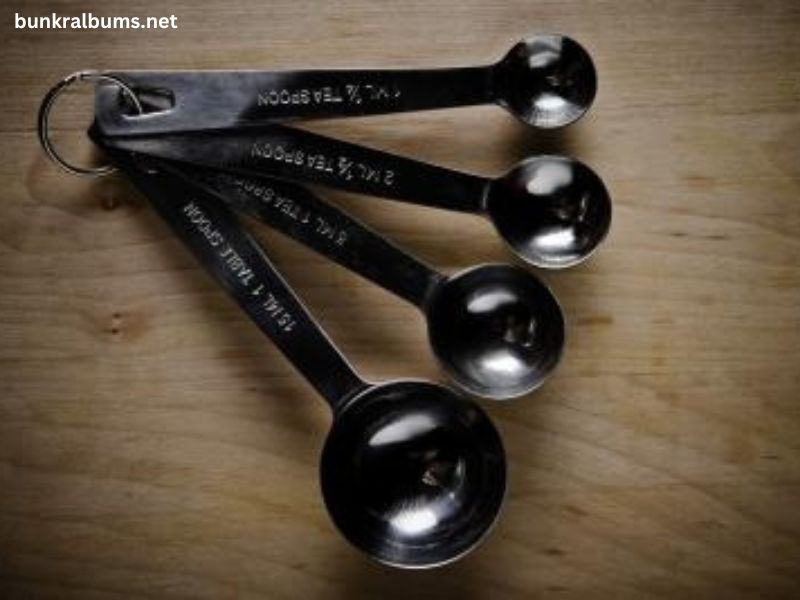Understanding measurements in cooking and baking is essential for achieving consistent and delicious results. One of the most common conversions people encounter is between ounces and tablespoons. Whether you’re a seasoned chef or a novice in the kitchen, knowing how to convert these measurements can streamline your cooking process. In this article, we will explore the relationship between ounces and tablespoons, delve into practical applications, and provide tips for accurate measuring.
Understanding the Basics: Ounces and Tablespoons
Before we dive into conversions, let’s clarify what ounces and tablespoons are.
Ounces
An ounce is a unit of weight commonly used in the United States and other countries that use the Imperial system. There are two types of ounces: fluid ounces and dry ounces.
- Fluid Ounce: This is a volume measurement typically used for liquids. One fluid ounce (fl oz) is equal to about 29.57 milliliters.
- Dry Ounce: This is a weight measurement used for solids, such as grains, sugar, or flour.
In cooking, especially in the U.S., fluid ounces are more commonly used for recipes that involve liquids.
Tablespoons
A tablespoon (Tbsp) is another volume measurement. One tablespoon is equal to three teaspoons and is approximately 14.79 milliliters.
The Conversion: How Many Tablespoons in an Ounce?
When it comes to the conversion between fluid ounces and tablespoons, the answer is straightforward:
- 1 fluid ounce = 2 tablespoons
This simple conversion is crucial for recipe adjustments, portion control, and ingredient substitutions.
Examples of Use
Let’s look at some practical examples of how this conversion is applied in everyday cooking:
- Soups and Sauces: If a recipe calls for 4 fluid ounces of broth, you can easily convert this to tablespoons:
4 fl oz×2 Tbsp/fl oz=8 Tbsp4 \, \text{fl oz} \times 2 \, \text{Tbsp/fl oz} = 8 \, \text{Tbsp} - Baking: When a cookie recipe requires 6 fluid ounces of milk, you can convert that to tablespoons as well:
6 fl oz×2=12 Tbsp6 \, \text{fl oz} \times 2 = 12 \, \text{Tbsp}
Understanding this conversion allows for quick adjustments based on what measuring tools you have available in your kitchen.
Converting Dry Ounces to Tablespoons
While the fluid ounce to tablespoon conversion is clear-cut, converting dry ounces to tablespoons is a bit more complex because it depends on the density of the ingredient being measured. Different substances have different weights, meaning that an ounce of flour does not occupy the same volume as an ounce of sugar.
General Guideline
However, here are some general conversions for common ingredients:
- Flour: 1 ounce = about 3.2 tablespoons
- Granulated Sugar: 1 ounce = about 2.25 tablespoons
- Brown Sugar (packed): 1 ounce = about 2 tablespoons
- Butter: 1 ounce = about 2 tablespoons
Why Precision Matters
When baking, precision is vital. A slight variation in the amount of flour or sugar can drastically alter the texture and flavor of baked goods. Therefore, using a kitchen scale to measure dry ingredients can often yield better results than relying solely on volume measurements.
Practical Tips for Measuring Ingredients
Accurate measuring is essential in cooking and baking. Here are some tips to help you measure correctly:
1. Use the Right Tools
- Liquid Measuring Cups: Use a clear liquid measuring cup with measurement markings for fluids. These typically come with a spout for easy pouring.
- Dry Measuring Cups: For dry ingredients, use sets of measuring cups that allow you to scoop and level off the ingredient.
- Measuring Spoons: Have a set of measuring spoons for smaller quantities. Remember that one tablespoon is equal to three teaspoons.
2. Level Off Dry Ingredients
When measuring dry ingredients, especially flour, use a spoon to fill the measuring cup without packing it down. Then, level it off with a straight edge, such as a knife.
3. Use a Kitchen Scale
For the most accurate measurements, especially when baking, consider using a digital kitchen scale. This is particularly useful for recipes that provide ingredient quantities in ounces.
4. Understand Ingredient Densities
If a recipe calls for a dry ounce but uses tablespoons for liquids, remember that conversions can vary. Get to know the density of the ingredients you’re using for more accurate conversions.
When to Use Tablespoons vs. Ounces
Choosing between tablespoons and ounces often depends on the type of ingredient and the context of the recipe:
- Liquids: Fluid ounces are often more straightforward for liquids, while tablespoons are useful for smaller quantities. For instance, if you’re making a salad dressing, measuring in tablespoons might be more convenient.
- Dry Ingredients: If a recipe calls for a specific weight in ounces, use a scale to ensure precision, particularly for baking.
Conversion Table for Quick Reference
Here’s a handy table for quick conversions between ounces and tablespoons for common ingredients:
| Ingredient | 1 Ounce (Weight) | 1 Fluid Ounce (Volume) |
|---|---|---|
| All-purpose Flour | 3.2 Tbsp | 2 Tbsp |
| Granulated Sugar | 2.25 Tbsp | 2 Tbsp |
| Brown Sugar (packed) | 2 Tbsp | 2 Tbsp |
| Butter | 2 Tbsp | 2 Tbsp |
| Water | 0.96 Tbsp | 2 Tbsp |
Conclusion
Knowing how many tablespoons are in an ounce is a fundamental skill for anyone who enjoys cooking or baking. This conversion is not only useful for following recipes accurately but also for adjusting portions and experimenting with flavors. By mastering this simple relationship and applying accurate measuring techniques, you can enhance your culinary skills and create delicious dishes with confidence. Whether you’re measuring liquids or dry ingredients, having a clear understanding of these conversions will make your cooking experience smoother and more enjoyable.



